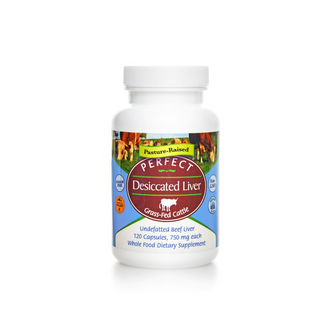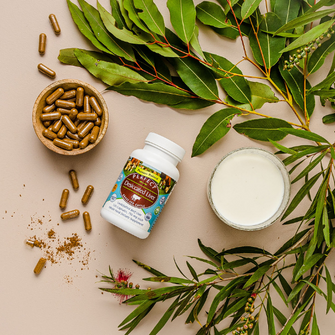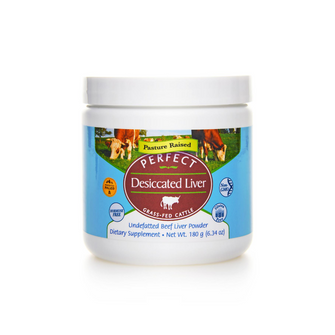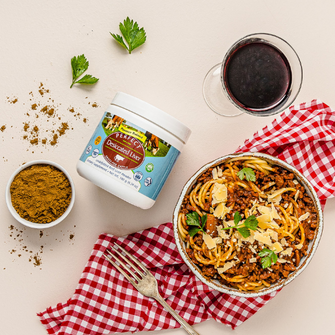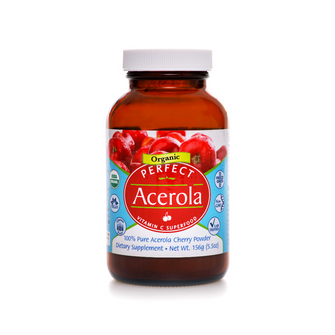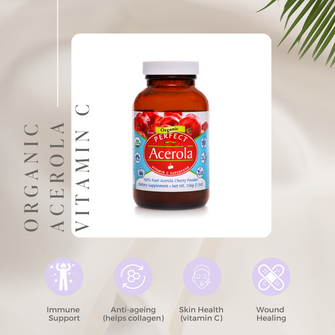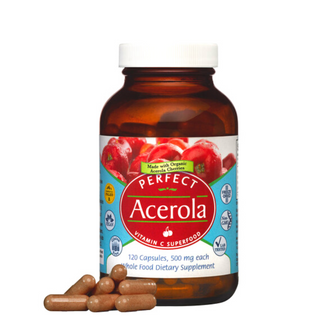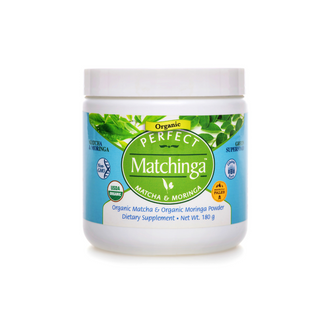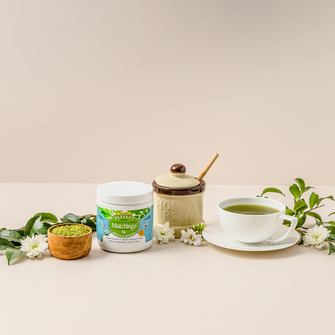Related Products
Evidence-Based ✅
Histamine intolerance sucks! I feel you! 😣
I just discovered that I have histamine intolerance. So I am going through the process of working it all out and learning along the way. It's becoming clear that the whole thing can be complex and has many factors to consider.
If you are reading this blog, I am sure you have come here for a reason. That reason may be because you think you may have histamine intolerance, or you do.
Nutrient deficiencies are just one of the many, and we will do a series about this topic over the next few weeks, so be sure to stick around!
Before we get into the first part of histamine intolerance, it's essential to go over the symptoms.
Symptoms
If the body isn't dealing with histamine, it builds up in the body and can have a flow-on effect that creates many symptoms, such as:
- Skin issues (dermatitis, eczema, hives, itchy skin, crawling skin, psoriasis)
- Flushing skin (red skin)
- Headaches and migraines
- Panic attacks
- Irritability
- Dizziness or even vertigo
- Shortness of breath
- Sniffling, coughing or runny nose after eating certain foods
- Food allergies
- An adverse reaction to eating certain foods (fermented, aged, leftovers)
- A negative response to drinking alcohol (especially wine or beer)
- Feel fatigued after eating certain foods
- Tightening of the throat after eating
- Experience low blood pressure
- PMS frequently (premenstrual syndrome)
- Get heartburn
- Experience motion sickness
- Loose stools
- Chronically inflamed
- IBS (irritable bowel syndrome)
How to Test for Histamine Intolerance?
There is not really a specific test for histamine intolerance but you can do a few things to get a fairly good indication such as getting your DAO levels tested.
Another thing you can do is a 'Smart DNA' test. This will show if your body has trouble breaking down histamine. One of our customers Suzie mentioned to us that she had recently had this test and it showed which pathways her body has challenges with. She said that her histamine was right up there.
I need to clarify with her what she meant by that, so I will edit this article again soon...
Suzie said that the DNA tests cover a lot of stuff but they're not cheap. She also mentioned that "These tests are very insightful and can help to show the best way to support your body".
I myself had DNA testing done a few years ago and the tests showed mutations in the MTHFR gene which affects methylation and therefore, histamine breakdown.
We will go more into depth on this soon.
According to the science, there are two main pathways that metabolise most of the synthesised histamine. They are histamine-N-methyltransferase (HNMT) and DOA (diamine oxidase).
HNMT actually metabolises 50-80% of histamine and DAO metabolises 15-30%.
How you react to foods or wine is a pretty good indicator too!
We are repeating the symptoms above but in more detail. Symptoms measure testing for Histamine Intolerance. How you score on the questions below can help you to gauge whether you have this condition or not.
This file below is a PNG which you can easily drag and drop onto your desktop. Simply print and fill out for your own reference.

How You Scored
0 symptoms: Woo Hoo! – it looks like you don’t have a problem with histamine. Lucky you!
1 – 4 symptoms: You may have histamine intolerance. More investigation would be needed as many of the symptoms can be related to other health issues. Might it be time to speak to a naturopath to get further insight?
5+ Symptoms: Histamine intolerance can be tricky to test for, but if you did score five or more on the questions above, it might be time to start looking at your diet, lifestyle and environment. We can support our bodies through diet and correcting nutrient deficiencies. We can also support our health and healing through adjusting our lifestyle, habits, behaviours and environment.
This information is not conclusive as this area of health is vast and complicated. It is, however, a great place to start.
The Role of DAO
Before we get into the nutritional deficiencies that create histamine intolerance, we must discuss the role of DAO.
DAO stands for diamine oxidase. This enzyme is involved in histamine metabolism (breaking it down for excretion from the body). This topic deserves its own blog, which will cover in this histamine series soon.
It is essential to mention certain nutrients' role in DAO production. Suppose you are deficient in any of these nutrients. In that case, you may suffer histamine intolerance as the production of the DAO enzyme goes down.
How Nutrient Deficiencies Relate to Histamine Intolerance
The specific nutrients regarding DAO production are vitamin C and copper. Vitamin C and copper help to increase the function of DAO.
Vitamin B6 is also essential as it significantly affects histamine breakdown.
You can find copper (zinc and B vitamins) in liver and liver supplements.
Acerola cherry is a fantastic source of bioavailable vitamin C.
Consuming liver supplements and high-quality, non-synthetic vitamin C supplements regularly can help.
Just 1/4 tsp of Perfect Acerola each day is adequate.
Four capsules of Perfect Desiccated (grass-fed beef) liver daily is all you need.
This simple practice can favour DAO production and help break down histamines better.
Other Foods that Can Help HIT
We wrote a blog (as part of this series), that includes all the foods and beverages to avoid and the ones to include and eat more of). One of those foods is Matchinga.
Matchinga contains both organic moringa leaf powder and organic matcha tea powder. Both of these have anti-histamine properties.
To learn more, please see our blog here.
Testing for Deficiencies
Testing for deficiencies through a simple blood test can be helpful. Testing for zinc and copper levels especially as these minerals have an opposing relationship in the body.
The thing is, that copper and zinc are competitive with one another. The only way to create balance and prevent a problem is to ensure that you're getting more zinc in your diet than copper.
This is because copper can easily accumulate in the body. This can become toxic.
Zinc on the other hand, is stored short-term in the body and gets frequently excreted through both urine and our stools.
The correct ratio of copper to zinc is 1:8.
Copper Deficiency
If you have a copper deficiency this can be one possible cause of histamine intolerance.
Correcting imbalance is the key as you don't want to be deficient or overly abundant in any nutrient.
How to Get the Right Ratio?
If you consume a diet that is rich in animal products you will fair much better in regards to nutrient balance. That is because animal products contain more bioavailable nutrients compared to plant foods (such as veggies).
One of the reasons that plant foods are not as bioavailable and how they can interfere with proper nutrient absorption is because they contain certain anti-nutrients.
Anti-nutrients such as phytic acid (phytates) affects zinc absorption, but also other nutrients such as iron. Phytates are found in legumes, pulses, beans, nuts and seeds. They can be soaked, sprouted and fermented for better absorption and fewer phytates.
Best Zinc Sources
- Oysters & Shell fish
- Lamb
- Grass-fed beef
- Chicken
- Pastured eggs
- Grass-fed liver
Other Zinc Sources
(not as good due to lower bioavailability and anti-nutrients)
- Legumes (high in phytates)
- Seeds (high in phytates)
- Nuts (high in phytates)
- Dairy (difficult for some to tolerate and may cause histamine issues)
- Whole grains (contains the anti-nutrient gluten, hard to digest and can cause histamine issues, most grains in general with the exception of rice*
- Dark chocolate (contains oxalates so eat moderately or cut out completely)
*Rice can be high in toxic arsenic so choose carefully.
Best Copper Sources
- Oysters, crab, lobster & fish
- Organ meats such as liver (and liver supplements)
Note: when found in animal products, you are usually getting the right amount of each nutrient (nature is intelligent like that). But if you take in synthetic supplement form, sometimes we may either get too much or we may not absorb it as the body can have trouble recognising synthetic nutrition.
Other Copper Sources
- Nuts and seeds (high in phytates)
- Beans (also high in phytates)
- Spinach, chard and kale (high in oxalates if eaten raw but ok if cooked in ghee or butter)
- Potato skins (high in oxalates too) Opt for certified organic potatoes to reduce harmful pesticides and herbicides such as glyphosate). This goes for all produce!
A Quick Word on Oxalates
Oxalates are another type of anti-nutrient and they are found in many vegetables and some fruits. We will be chatting more about this soon. Oxalates can be broken down through the cooking process and also by fermentation*
*Fermented products are high in histamine so they are not recommended on a low histamine diet.
Oxalates and other plant toxins (such as lectins), can be difficult for HIT people to break down so be sure to choose low plant toxin options as well as low histamine options.
This will be in our blog coming soon...
More Information on Histamine Intolerance
We hope you enjoyed this information today, and for more info on this topic, please see our other blogs about Histamine issues below:
References:
https://www.ncbi.nlm.nih.gov/pmc/articles/PMC3649098/
https://www.ncbi.nlm.nih.gov/books/NBK557790/
https://drjockers.com/copper-zinc-imbalance/
https://www.westonaprice.org/health-topics/modern-diseases/copper-zinc-imbalance-unrecognized-consequence-of-plant-based-diets-and-a-contributor-to-chronic-fatigue/#gsc.tab=0
https://drhagmeyer.com/dao-deficiency-how-to-activate-the-enzyme-that-reduces-histamine-intolerance-and-mcas-symptoms/
https://draxe.com/nutrition/foods-high-in-zinc/
https://www.healthline.com/nutrition/best-foods-high-in-zinc
https://www.copperh2o.com/blogs/blog/ultimate-guide-to-foods-with-copper
https://www.low-histamine.com/tag/grains/
Disclaimer: This article is strictly for informational purposes and is not intended as health advice. Statements made have not been evaluated by the TGA and are not intended to treat, diagnose, cure or prevent and one should always consult with their trusted health professional before adding a new supplement to their diet.


